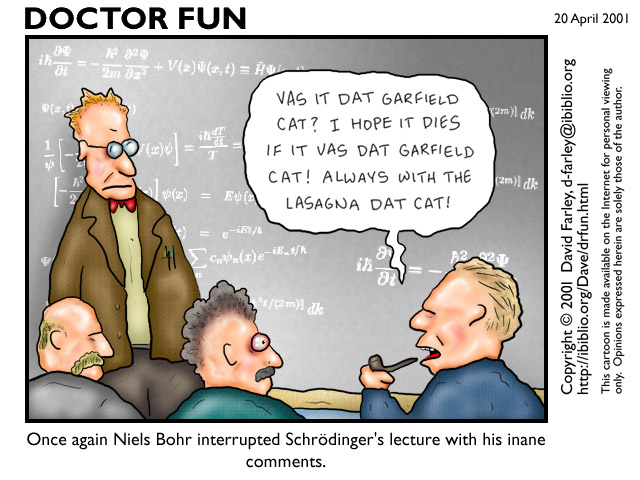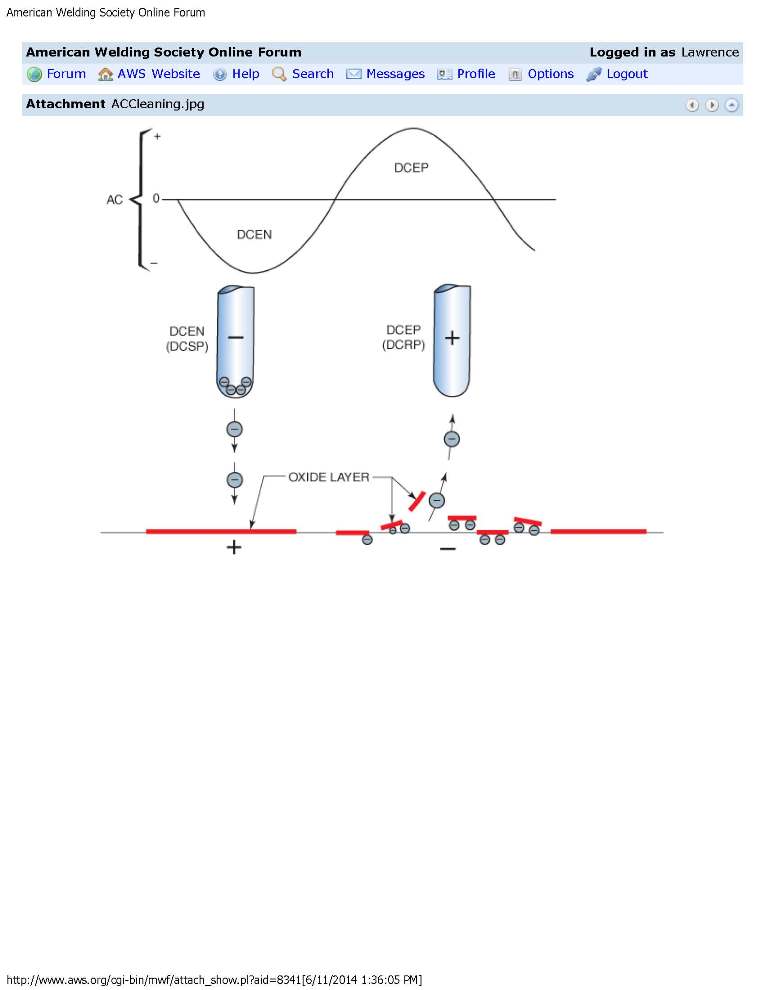Hello Jordan, if he is using a Dynasty: don't use the pure tungsten. Check the literature and manual for that machine and it specifically refers to NOT using pure tungsten. As to the cracking line regarding HF cleaning: HF is not the provider of cleaning, the amount, amplitude, and other characteristics of DCRP in the AC sine wave is. As you increase the duration of the AC cycle on the DCRP side, cleaning increases, if you are also able to increase the amperage independently of the other side of the cycle(DCSP) you will likely have an increase in the boundaries of the arc cleaning area.
The cracking sounds as if it might be related to too rapid of a cool of the weld metal, creating stress cracking from this cooling(if he is using 5356 it is possible that the alloy is strong enough that the parent metal yields before the filler does as cooling is taking place). He may be better off with a lesser HZ setting to increase the arc column size and providing for a more expanded heating of the weld zone as opposed to a localized one from a higher HZ setting, this information would relate to use of the Dynasty and not the Syncrowave. Doing this would provide for a slower cooling rate as the welding is progressing and possible aid with the "quick freeze, crack possibility). I am sure others will have additional information to contribute on this. Good luck and best regards, Allan
It would be suggested to decrease the HAZ by limiting the input and which may be accomplished with a sharpened tungsten with a radiused end without balling. Set the AC Balance control at maximum which should be 68% with the Syncrowave and the Dynasty can be moved towards 75% time at negative. The Syncrowave has only a 60 hertz output the Dynasty may be varied to 120 - 180 hertz which provides a more focused arc. BTW when AC (sinusoidal or squarewave) is shown on an oscilloscope there is a zero ( 0 ) line. When the wave is above the zero line the output is positive and when the wave is below zero it is negative. It is still AC not DC ~ that occurs when it is rectified. High frequency - High voltage arc starter adjustment only aids in starting and stabilizing. It has no affect on penetration or oxide cleaning. Oxide Cleaning is a result of mechanical, chemical and the positive side of the sine wave. If the aluminum has been thoroughly cleaned mechanically, minimum time at positive is necessary.
Assuming that thick sections are being welded using a multiple pass technique it would be suggested to allow cooling between passes
Sir,
At another note in connection to your "Good books for weld science" post - and again without any offence intended.
Abbreviations/denotations appear easy to use, since naturally the author is fully aware of their meaning.
However, when communicating/sharing with others they sometimes might impede the reader's comprehension.
Not that 'HF' was that difficult to interpret (I hope though it means 'High Frequency') but, as you are also searching for scientific welding books, just a friendly cue. You may find in these "good books for weld science" that their (scientific) authors make reasonable use of nomenclatures/lists of abbreviations. Also, they - most regularly - use units in conjunction to numbers and figures for enabling the reader to quantify e.g. the magnitude of a pre-heating temperature applied. All this finally, for allowing their readers to follow them through their trains of thoughts.
You may consider me a nitpicker, but finally we always seem to end up at a certain point.
That is, exactly where e.g. 'Al' (in this case not abbreviating 'aluminium' but '803056') is impassioned and permanently reasoning to properly use 'common' terminology, simply to battle misunderstandings; and e.g. 'Henry' (note, not representing here the unit of electrical inductance, but 'ssbn727'), who is consistently and patiently requesting 'more details', particularly in conjunction to technical posts readable on this forum.
Like I say - just a friendly note.
Hi Jordan,
It's actually Wednesday and I have a few things to add if your up for it? I have read your post and come to a couple of conclusions based on your posting of material type, thickness and welding process.
Sure, you took a few lumps over your misunderstandings of the process but so what?
You asked, were clarified sharply, and maybe learned something as a result. Perfect.
Lets move on from there and remember to keep learning.
Typically, cracking in aluminum results from contraction forces. While the properties and grades of Aluminum require conciderations for weldability, filler metal selection, the welding process/rod selection, if the contraction forces exceed the strength of the weld filler metal due to a lack of filler being added to the volume of heat energy causing expansion, you get a crack when thing contract.
Hey. it's 2:49 am, I'm doing my best here.
But that doesn't sound like your customers issues.
Thermal conductivity. You mentioned a thick flange. It takes a whole lot of amperage to over come the heat sink a large aluminum flange can pull away from the weld zone.
While some would argue about the use of preheat on aluminum, there is a time and place for everything and quite frankly, baring any procedural issues, 150-200F will help to preheat the heavy flange while overcoming the issue of thermal conductivity and thermal contraction..
In simple terms, your squeezing everything to get it hot enough to quickly melt the rod in a very small area because the heat is being pulled away. This requires serious amperage on a thick flange. Bet a $5er your using 100% Argon? Try helium.
Preheating, while not reducing actual welding amperage requirements, will if the power sorce is underpowered or lacking duty cycle help over come the initial current draw of thermal conductivity.
Welding aluminum requires the high frequency current, superimposed over the welding current to prevent touch starting and contamination to the electrode. As mentioned, Alternating current has both positive and negative values. The syncrowave being a transformer rectifer machine, typically was a square wave, with the balance control adding more positive or negative values. This machine has a drooping volt amp curve that suggests the difference in width was a variation in arc length or arc wonder with the tungsten while welding but I could be wrong?
You mention the weld appearing cold...Hammering major amps without allowing for a degree of thermal conductivity to pull heat into the material will cause your weld to cool to quickly, the adjacent material pulls and seemingly the weaken area cracks. You describe cracks next to the weld, well this could be due to an elevated arc length or arc wonder liquifiying the metal surface slightly, the weld is thicker, surrounding metal thicker, surface cracking could result from contraction forces from surrounding surfaces?
Pure tungsten electrodes. Well, we have some pretty strong opinions on that one. I'll say this on the matter. All tungsten electrodes have plus and minus benefits. But they are all made of the same mineral, Tungsten. Alloys are added to impart qualities.
Some hold a sharp point better, some hold a balled end better, some resist contamination or self clean some what and some do a bit of all of it reasonably well.
The choice of tungsten wasn't what cause the cracking. What he did with it maybe?
The Dynasty. That's an inverter machine. Allows for wave form, current balancing and frequency variations. Education is the key to understanding and fully appreciating what that machine can do. They do as mentioned hold a preference to an alloyed tungsten electrode but it's my belief that the reason is due to power scorce improvements and efficencies aligned to alloyed tungsten electrode useage.
But talking about welding aluminum, not that I can add much over what most have already mentioned, when the high frequency current establishes the path for the welding current, add more current slowly... this in itself allowing local heat to build, thermal conductivity heat transfer through the material to stabilize and prevent excessive contactual forces, ionic bombardment to clean, and then slowly add more current to establish the weld pool size then away you go. This can be a dutycycle issue depending on the amperage requirements. Helium or Argon helium blending for shielding would reduce this requirement slightly. Remember once the aluminum is hot, it's mostly all hot in that general area, control the heat by reducing current slightly to remain in control of the weld, tail out adding filler to prevent crater cracks. Steady as it goes.
Couple more things. Sometimes a blunt point is better than a sharp point. Slow and steady cause it's not a race. And the cure for me was someone taking the time to do a bit of explaining. Well, you can't say I didn't add to it.


















 ) one had to use with GTAW were Green, Red and maybe Brown in stock @ most LWSS's, and if one wanted Yellow (Zirconiated) then one would have to place an order because the store most likely didn't have it in stock... it's not that it wasn't available to purchase... It's just that not as many customers requested zirconiated W.
) one had to use with GTAW were Green, Red and maybe Brown in stock @ most LWSS's, and if one wanted Yellow (Zirconiated) then one would have to place an order because the store most likely didn't have it in stock... it's not that it wasn't available to purchase... It's just that not as many customers requested zirconiated W.
























 Thanks for the correction 357 Max...
Thanks for the correction 357 Max...








